Cost vs Conscience: Latest Booking.com report delves into the dilemma dividing sustainable travel in 2023
The latest 2023 sustainability report by Booking.com is now available for download and consultation.
The sample size of the survey has been increased, and it is probably the most extensive research to date, collecting data from over 33,000 travellers across 35 countries and territories, providing a clearer picture of consumer beliefs and expectations.
We take a look at the picture that emerges from this report and provide our own thoughts.
Travellers are more intentional and although they are getting informed, we still need more information out there.
In comparison to the previous report, more visitors are seeking authentic experiences (75%). However, a great percentage (40%) still declares that they do not know where to find the appropriate information.
43% of them consider themselves knowledgeable on sustainability and say that their main source of information is news and social media.
This data suggests to us at least two things:
- the industry is not yet providing enough relevant information to them, and
- the media continue to have an important role in the awareness of the sustainability journey.
Beyond the confusion that we are trying to navigate in our own companies regarding sustainability, not informing our potential tourists about our sustainability journey and actionable intentions is clearly a missed opportunity to create trust and gain their support.
There are new travellers that are interested in leaving a positive impact, but they are left without guidance on where to look for further facts. The crucial role of the media is also an element that needs to receive more space on the international agenda.
There are several questions we need to consider, debate and ultimately answer as an industry, in terms of information dissemination.
- Is the media playing their role and do we adequately value it?
- What kind of narratives are we contributing to disseminate globally?
- Are we clarifying with real examples and case studies the details of the challenges encountered?
- Who are we writing for? And why?
- Are we trying to inform and educate while also entertaining? Are we inspiring positive change or playing an artificial neutral role?
Travellers are changing their behaviours, starting at home.
The report informs us also that travellers are taking sustainable steps on vacations, and although they mainly seem related to the environment, they are showing a shift of perception and in particular a more conscious use of the local natural resources, such as water and electricity.
Greater use of public transport and environmentally friendly options, like cycling and walking, dominate when planning sightseeing activities, and these are actively pursued by 43% of the respondents.
Those changes reflect an inner change of attitude, because we see they are also changing their behaviour at home. Especially with regard to waste reduction, the choice of transport and the preference towards small and independent shops. Buying local has become a new ‘mantra’, at home as well as on holiday.
Furthermore, 69% of the interviewees want the money they spend when travelling to go back to the local community. If that desire could be turned into mainstream practice, it could help to fight the traditional 80% world average of tourism leakage – i.e. the money that will leave the destination – that we currently experience.
A final message that emerges from the research is that tourists are becoming more greenwashing-proof. In fact, they are not only getting more attentive to companies that talk about sustainability but they are also showing interest in learning more about why specific options are recognised as more sustainable (69%).
Since the certification process can sometimes be a puzzling and complex process for the industry itself, it should not be a surprise that travellers want to know more too. One option would be to share those journeys with them, and our transparency would certainly earn more trust than silence.
Armed with the valuable information from this new report, we should be aware, though, that our response can only be of one kind: action based. The time for the words has run out, and travellers are asking questions.
We invite you to have a look at the full report and then suggest that you make your own action plan.
What would be your next action?

The Last Bubble
Last week, The Last Tourist, the documentary directed and written by Tyson Sadler and executive produced by Bruce Poon Tip, founder of G Adventure, was released in UK and Ireland, increasing the number of people that are now able to watch the movie, which was first launched last year. And more travellers will discover that ‘travel has lost its way’. A moment of reflection is due.
Forbes talks about it as the documentary that every traveler should watch. We agree, but we would also add ‘and the whole tourism industry as well’.
If it is true that tourists, as the demand, can influence the offering, it is also true that the really powerful effects will only be felt when the industry works in tandem with them – educating them about the real picture, while changing the practice behind the scenes at the grassroots level.
We believe that the strength and subtle beauty of this film can be addressed to both audiences. It doesn’t have to perform a shaming exercise, but rather make an honest declaration – although, for many of us, an old truth – is that tourism can, and has, destroyed and harmed places, human beings and wildlife. Whose problem is this? And who should take responsibility? Without doubt they are shared problems and shared responsibilities.
The film provides us with something that we usually lack: the lucidity and distance to observe the bigger picture from afar, where we are not directly involved.
From there, many bubbles start to appear and their mere existence seems to represent the root of the problem. Because the problem is not spending our holiday in a resort or on a cruise. The problem rather is about not being aware of the costs and consequences of that choice, in the exact circumstances in which those activities and services are offered.
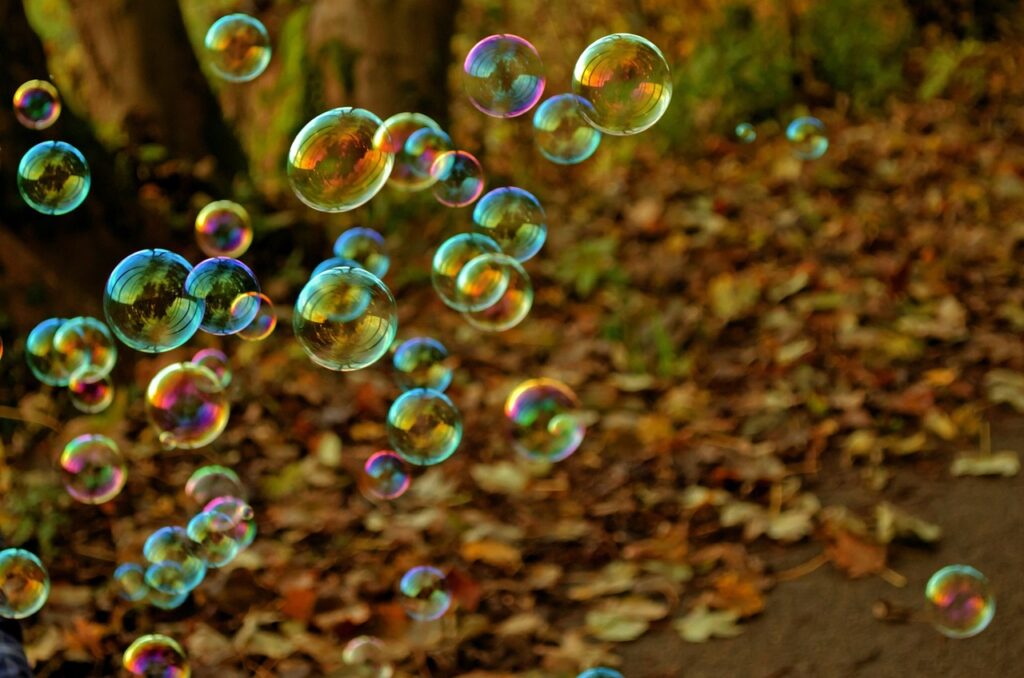
Are local natural resources being squandered to the detriment of the local population?
Is the wildlife and natural environment being respected or turned into a cruel show for tourists to enjoy?
Are people employed under labour conditions that we would consider unacceptable for ourselves at home?
The most intense and emotional scenes in The Last Tourist seem to be generated by those bubbles existing and never touching or merging.
The bubble in which tourists escape their homes and routines. The bubble of an industry that is built to serve tourists and provide infinite entertainment at low costs.
The bubble in which the place itself exists, with its vulnerabilities needs and limitations.
The existence of these bubbles – the blinding search for profit or for hedonism, or just pure survival – are maintained in darkness, disconnected from each other.
The biggest and most dangerous bubble that emerges is that of ignorance, i.e. of not knowing what is actually happening out there, in the place that we will so proudly show off on our social media.
Bursting bubbles!
Can we dare to think beyond this position and re-create the way we offer tourism?
Can we exist without the exploitation of humans, wildlife and local resources?
Can we also generate benefits for the destination where we operate?
If we cannot, we should simply disappear.
What if we put the destination at the centre, invert the pyramid of entitlement and start considering that we live on a real and limited planet among real and vulnerable societies?
Some might argue that those assumptions collide with the traditional concept of leisure holidays. Not necessarily, we should reply, as many examples across the globe show us.
The concept of a holiday is changing and we should adapt with it.
And here comes the recognition of the power of tourists, but there is a shift we need to make ourselves, as an industry, beforehand.
This is the change to the mindset that many of the participants in the documentary talk about, including Judy Kepher Gona (Sustainable Travel & Tourism Agenda), and Dr Jane Goodall (the Jane Goodall Institute & UN Messenger of Peace).
The critical point is, perhaps, just to wake up from the hedonistic dream and reconnect with a place as human beings.
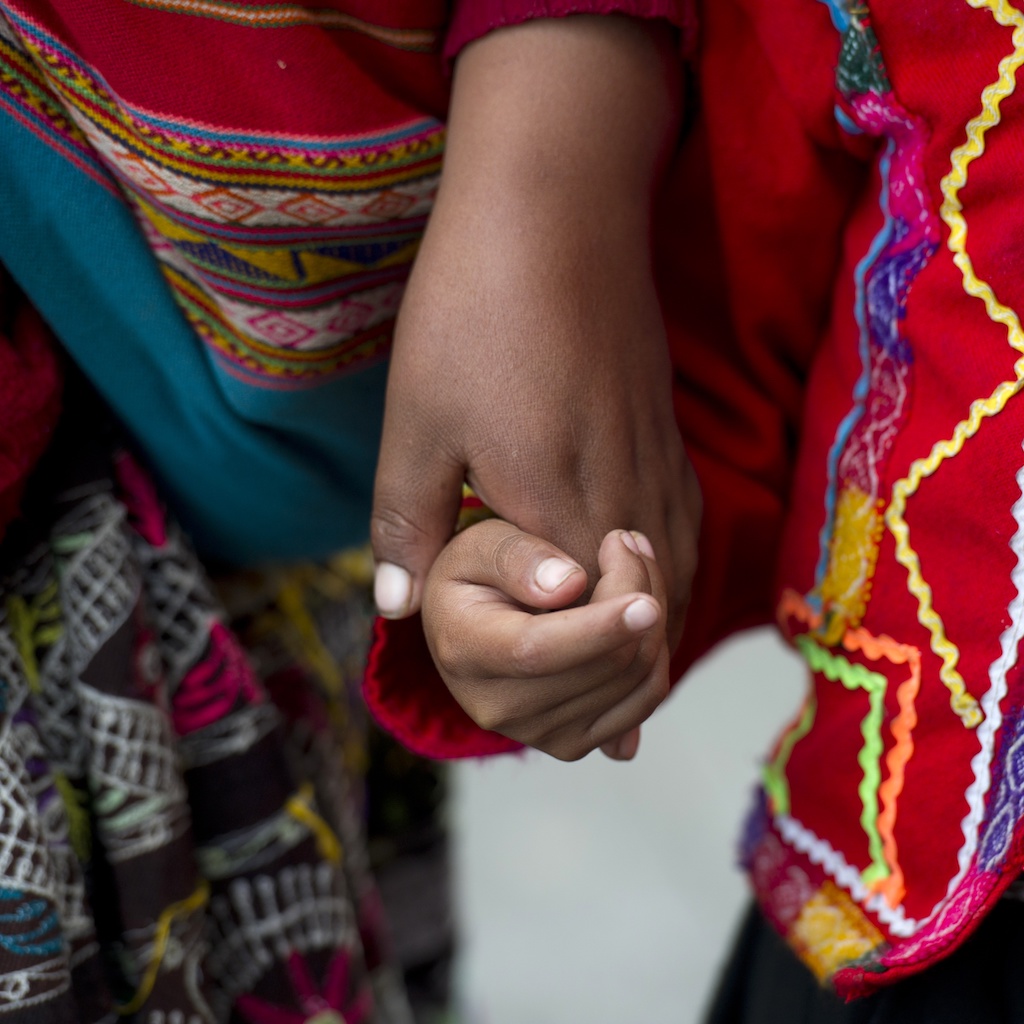
Where to start?
When I was involved with academic research, I learned that what makes good research – ahead even of a strong theory and the right methodology – is to ask good questions. Questions that are relevant, important, and, usually, not asked before.
Research can be moved forward by any question, but only the good questions will lead to change and social innovation.
I suppose that in the case of our industry, ‘good’ means to be effective, to be action-driven and focused on problem-solving.
A question that our industry might need to ask itself is: how much do we know about the destination we are taking visitors to?
What do we know about its social issues, environmental damage, cultural protection and political situation?
If not, why don’t we know?
If we do, how do we fit in to that picture? What is our contribution to the current situation?
We and our planet are at the point where it is no longer possible to avoid those questions. Our industry should be reprogrammed so that we can’t start any operations without that basic knowledge of a place. In some locations, the local government and civil society are already leading the way by demanding positive impact planning.
It is about mission and vision: are we here just for profit or are we here to support the flourishing of the destination while we conduct our successful business?
‘The destination is no longer relevant’, shouts out Bruce at the beginning of the film.
What if we start by making the destination relevant again?
After watching the documentary – if you have had the chance yet – we would suggest two things:
- Share it, not only on your LinkedIn profile and other social media, but also, and most importantly, among your circle of friends and family,
- Take some concrete actions by asking yourself the right, valid questions and start an inspiring dialogue with our clients, made up of questions and answers, and mutual reflection and education.
CELEBRATING THE VOICES OF GUARDIANS OF THE ENVIRONMENT
This year, the Green stage at the ITB Berlin on the 7th of March got really packed with colours and brilliant, inspiring stories from the field.
Many of the projects nominated and awarded at the Green Destination, the TO DO! Awards and the ones participating in the Authentic Indigenous and Community-Based Tourism Experiences panel, that I had the pleasure to moderate, have something in common: they are self-empowered, indigenous communities protecting their environment and teaching us a hard lesson, but in a gentle and caring way.
Indigenous people on stage
Nils Torbjörn Nutti, Founder of Nutti Sámi Siida, joined our panel from Sweden after receiving a TO DO! Award for the Nuratu CBT project from Uzbekistan.
The letter that he wrote me, in preparation for the event, to introduce himself and talk about the story of his company made a clear point: If we don’t see our connection to nature, and where we come from, then it would be difficult to also understand why we need to save it and where the limits are to our future living.
His tourism project was born from the need to respond to the effects of climate change on his immediate natural environment.
CBT has been providing an additional source of income that can complement the traditional work with the reindeer that his family and he have carried on since 1990 between Russia, Finland and Sweden.
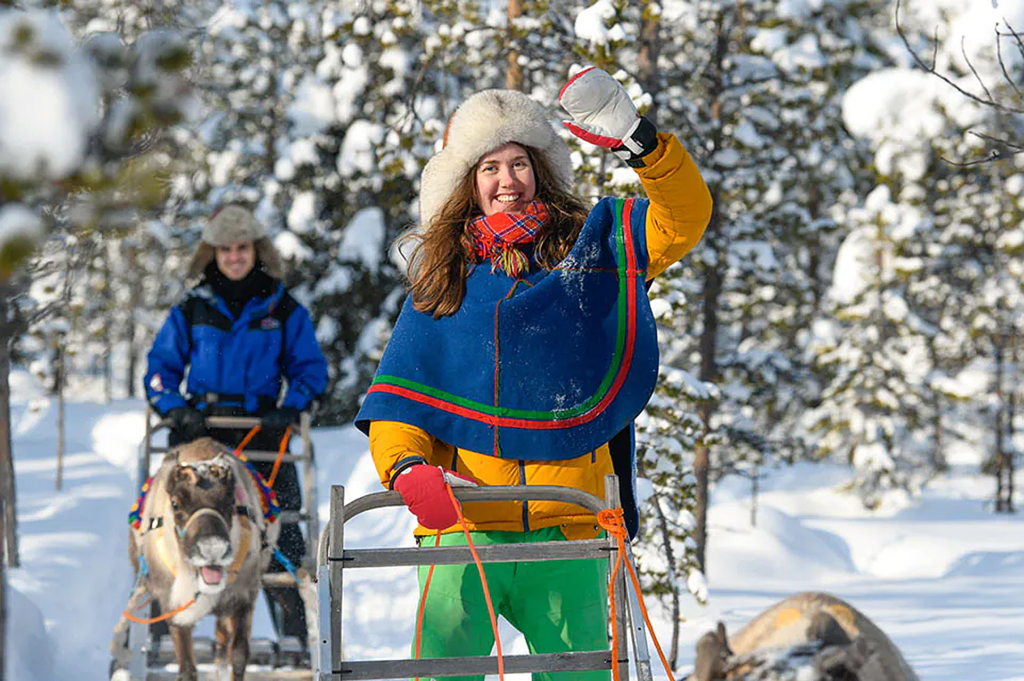
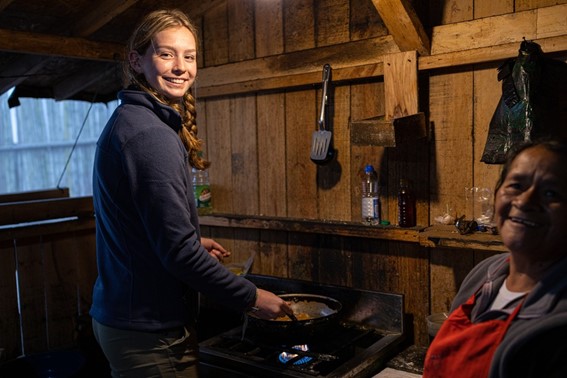
Yunguilla is the first indigenous community in Ecuador to be certified by TourCert for its high standards in sustainability and biosafety protocols. For the Yunguilla community, everything started with the common goal of the protection and conservation of their own natural resources – tourism came later. Theirs is an empowering story to listen to and retell, and it is also an old one, starting in 1995, which has seen many steep steps and stages in the process. Rolando Collaguazo – Management and Sales Manager of the project – told us that since 1998 they are proud to have been an exemplary case of indigenous-led conservation programmes, involving 50 local families caring for an area of 8,000 hectares of forest.
The youth are on the front line, actively involved in the operations and as guides, often welcoming back young adults returning to their land after finishing their university studies, packed with acquired scientific knowledge and the passion to reinvest it in their roots, literally.
The case of Bombinhas from Brazil – awarded 1st place in the Culture and Tradition category at the Green Destination Story awards – is a clear example of how when we talk about CBT it is often hard to distinguish between environment and culture. Their way of living is their way of caring for and protecting their environment.
In this small municipality in a Southern state of Brazil, two decades ago, the community united in an effort to keep alive the artisanal way of mullet fishing. This was their main source of income, together with more familiar agriculture, of the once-upon-a-time fishing village with indigenous, European Azorean Portuguese and African ethnic roots (caiçara), dating back to the sixteenth century. Today, the young generations are also learning the art and strengthening their identity through the passage of time, also using tourism as a tool.
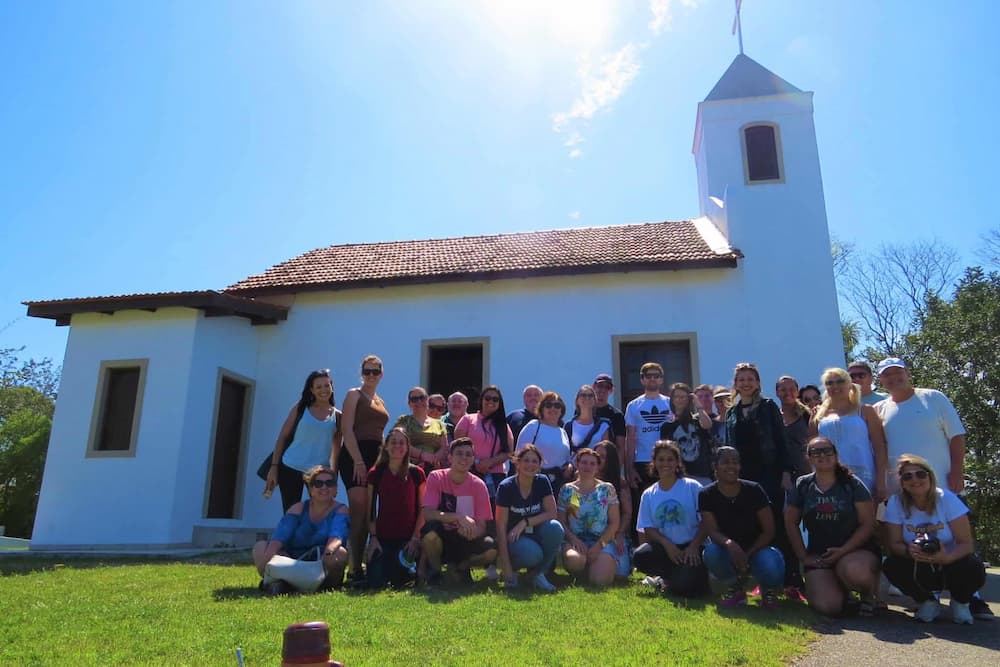
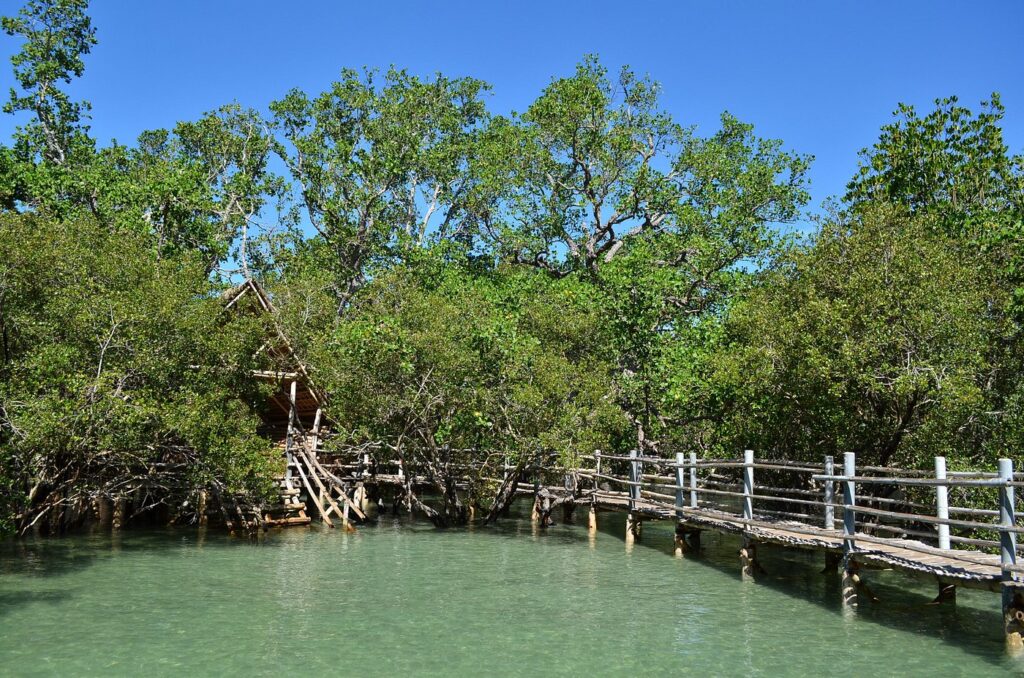
Even when the community has lost their ancestral connection with the land, like in the case of Suyac Island in the Sagay Marine Reserve, in the Philippines, the involvement of the local citizens becomes the only guarantee that biodiversity can be restored and then protected for the future ahead.
The local government in collaboration with the tourism authority acted as the propeller of the Community-Based Eco-Tourism Project for the protection of the mangrove forest. The external stakeholders provided the structure of the sustainable development plan, which was awarded 2nd place in the Nature and Scenery category of the Green Destinations awards.
The project couldn’t have achieved the results it did without the active involvement of the local community. Once their sense of pride and belonging with their surroundings was reawakened and re-established, they fully assumed the role of carers for their environment, as a part of their identity, and with the help of scientific training and workshops they were able to see the connections and their responsibility to them.
The diversity of the examples that were present on stage this year at the ITB Berlin, confirms that there is no one model that fits all, but rather multiple responses, because there are multiple ways that communities can find to lead the way towards their common objective.
Nevertheless, a main message can be taken and carried on. Local communities, as I wrote in a piece for TTG Media last year, should be considered the perfect allies of the tourism industry, and the missing stakeholder at the decision-making table.
If we combine our strengths and join forces with those often referred to as ‘the guardians of the forests’, our journey towards sustainability will have a much clearer path.
The regenerative approach that we are timidly testing is built upon the local and ancestral knowledge of the place. Only by listening to the repositories of that knowledge – in the simple acts carved out by their repeated gestures through generations – only when we start valuing its crucial importance will the mission to make tourism a tool towards sustainable development grow stronger, and with deeper and firmer roots.
Words by Elisa Spampinato

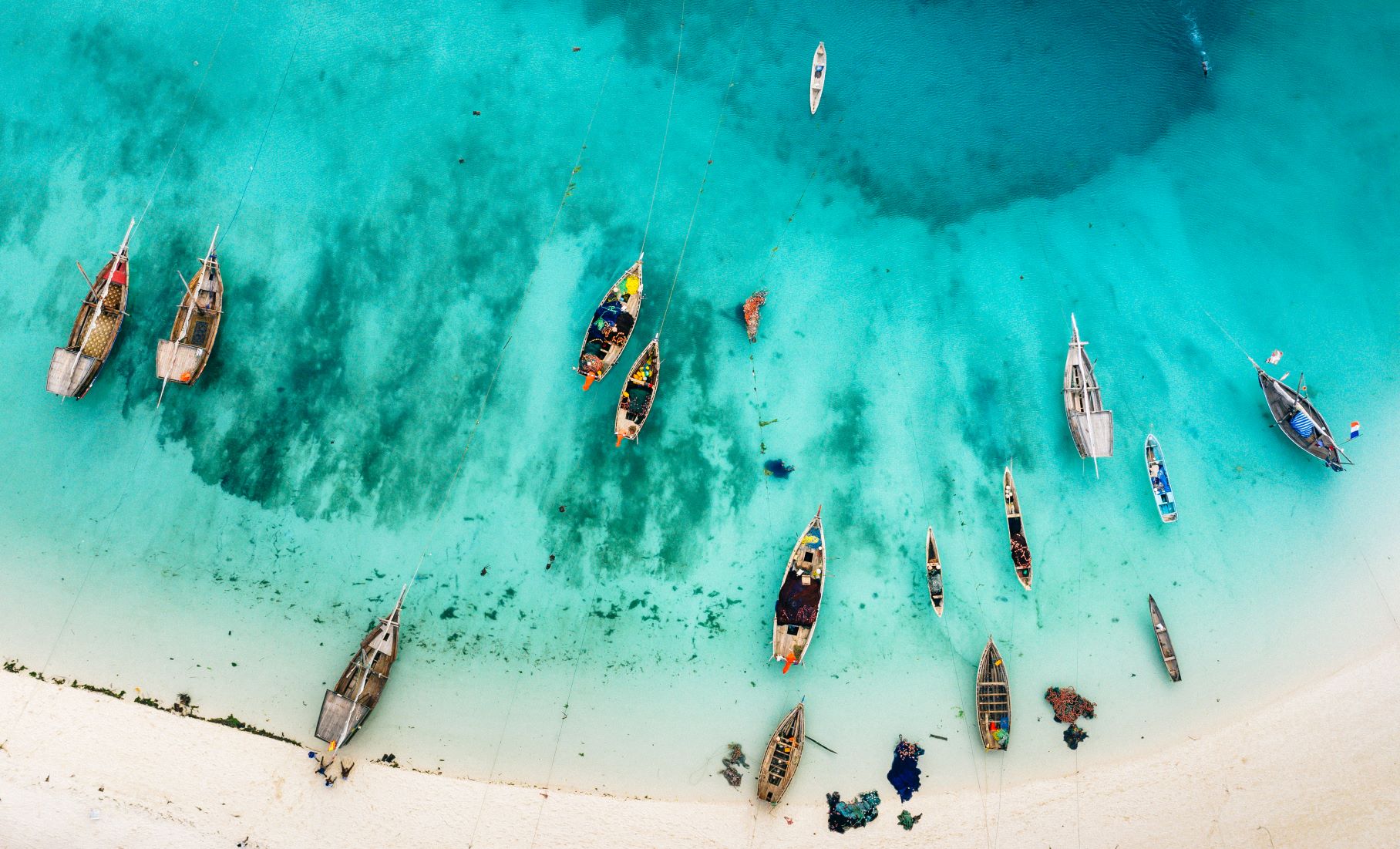


Recent Posts
Categories